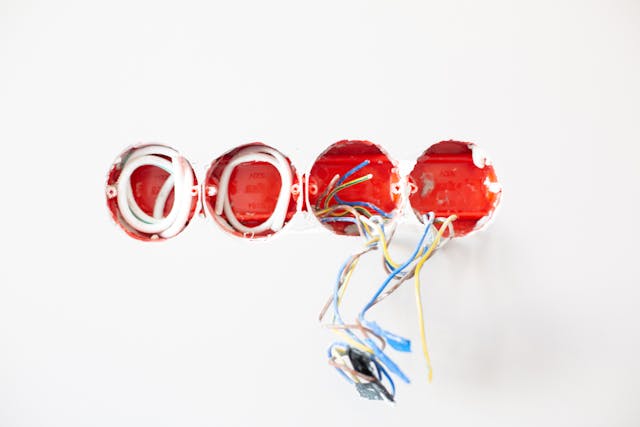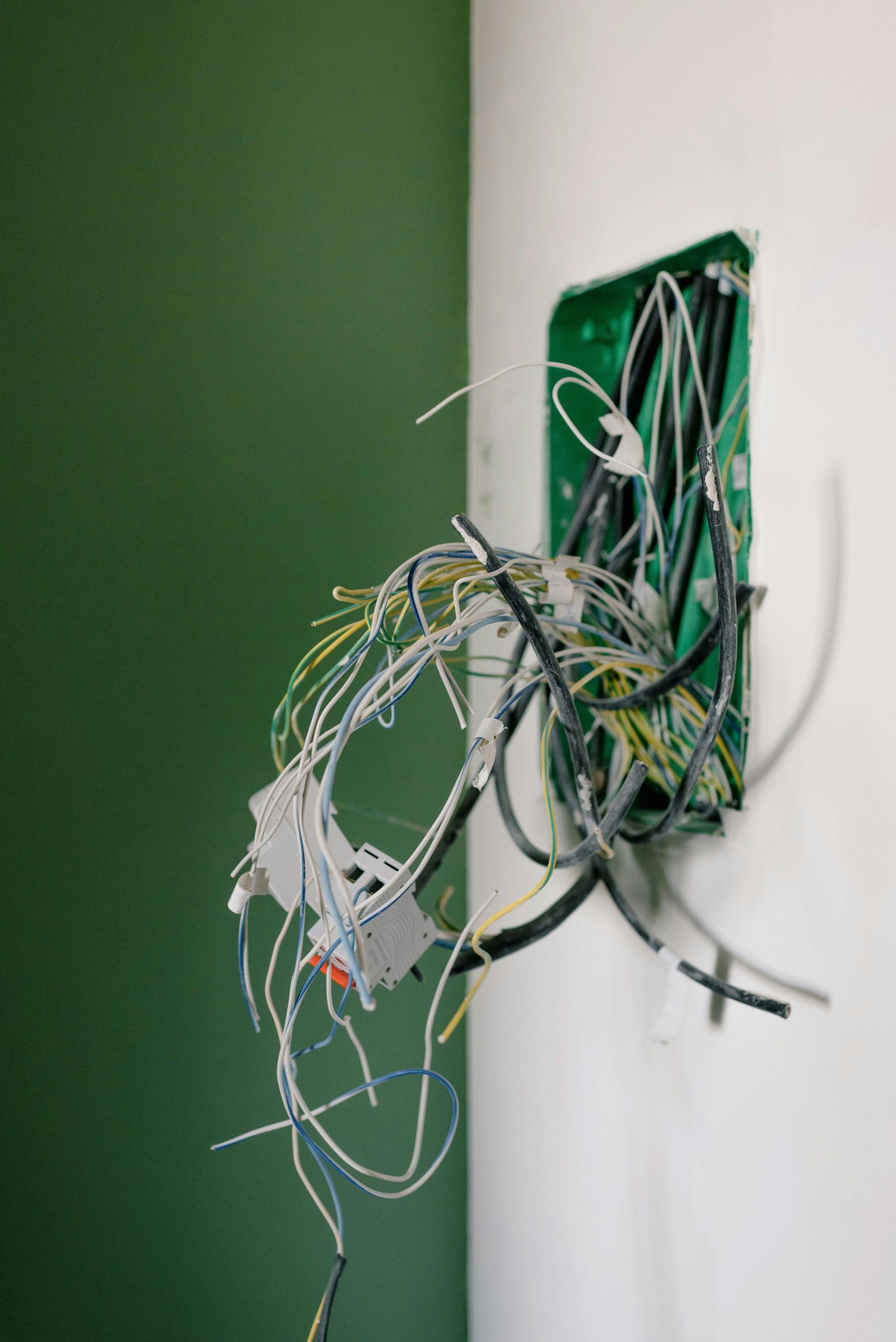Ever looked behind a light switch or seen a bunch of wires during a renovation and wondered, “What colour is live wire in NZ?” Well, Don’t worry, you’re not alone!
Understanding NZ electrical wiring colours might be a bit tricky but it helps you understand the power running through your home. This guide will help you learn the basics of electrical wiring colours in New Zealand, so you can handle any project with confidence and care.
Imagine you’re replacing a light fixture in your Auckland flat, excited to install those stylish pendant lights you found. But as you take down the old one, you’re suddenly staring at a mess of wires – brown, blue, yellow/green – and you feel confused.
Knowing electrical wiring colours in New Zealand can help you easily identify the live wire (the one carrying electricity) and ensure a safe installation.
Here’s the exciting bit: unlike some countries with a chaotic jumble of colours, New Zealand follows a standardised system for electrical wiring colours.
This not only promotes safety but also simplifies electrical work for DIY enthusiasts and qualified electricians alike. So, Let’s take a look at the different wire colours and what they do:
Brown (Active/Live)

This is the hero of the show! The brown wire, sometimes referred to as the “active” or “live” wire, is the one carrying electricity around your home. It’s the wire that delivers the power to your appliances, lights, and other electrical devices. Remember, treat this wire with respect – it packs a punch!
Blue (Neutral)
Think of the blue wire as the calming counterpart to the energetic brown one. The blue wire, also known as the “neutral” wire, provides a return path for electricity, completing the circuit and ensuring everything functions smoothly. It’s like the calming blue sky after a storm – essential for a balanced electrical system.
Green/Yellow (Earth)
Now, for the ultimate safety net: the green/yellow wire, also known as the “earth” wire. This crucial wire acts as a grounding conductor, diverting any stray currents away from people and equipment in case of a fault. It’s the invisible guardian angel of your electrical system, ensuring safety in the event of any mishaps.
While these are the main players in the NZ electrical wiring colours game, there can be a few additional characters you might encounter.
Black (Older Installations)
In some older homes built before the current standards were adopted, you might find black wires instead of brown. These also represent the “active” or “live” wires. If you’re unsure about the wiring in your older Auckland home, always consult a qualified electrician for guidance.
Red (Less Common)
Red wires are less commonly used in domestic settings but can sometimes be found in specific situations, such as three-phase electrical systems. It’s always best to consult a qualified electrician to identify the purpose of a red wire you encounter.
Safety First: A Golden Rule for Electrical Projects
Remember, folks, understanding NZ electrical wiring colours is just the first step. Electrical work can be risky if not done correctly. Here’s a golden rule to live by: when in doubt, call a qualified electrician! They have the expertise and experience to ensure your electrical projects are completed safely and adhere to all local regulations.
- Avoid electrical shock: Electrical shock can be dangerous and even fatal. Always turn off the power at the switchboard before working on electrical circuits or appliances.
- Use proper tools and equipment: Ensure you have the right tools and equipment for the job, such as voltage testers, wire strippers, and screwdrivers.
- Follow electrical safety codes: Adhere to all local electrical safety regulations to minimise the risk of accidents and injuries.
- Don’t attempt complex tasks: If you’re unsure about a particular electrical task, it’s best to leave it to a professional electrician. Attempting complex tasks without proper knowledge or experience can be dangerous.
- Regularly inspect your electrical system: Conduct regular visual inspections of your electrical wiring and equipment to identify any signs of damage or wear and tear.
- Hire a licensed electrician: Ensure that any electrician you hire is licensed and insured to operate in New Zealand. This will provide you with peace of mind and protection in case of any issues.
By following these safety guidelines and seeking professional help when needed, you can ensure that your electrical projects are completed safely and successfully.
The Power of Knowledge: Unlocking Electrical Confidence

By familiarising yourself with wiring colours and basic electrical safety principles, you’ll gain the confidence to tackle simple DIY electrical tasks around the house, like replacing light fixtures or installing additional power points.
However, for anything more complex, seeking the help of a qualified electrician like the experts here at Prolectrix, is always the smartest and safest option. We’re a team of passionate and qualified electricians serving the Auckland region, ensuring your home’s electrical system is humming along safely and efficiently.
Beyond the Basics: Exploring the Electrical World
Now that you’ve grasped the fundamentals of electrical wiring colours in New Zealand, the world of electrical systems becomes a bit less daunting. You can delve deeper into topics like understanding circuit breakers, deciphering electrical diagrams, and even exploring the potential of smart home technology.
With this newfound knowledge, you can make informed decisions about your home’s electrical needs, ensuring a safe and functional space for you and your family.
- Understanding circuit breakers: Learn how different types of circuit breakers work and how to identify and address issues with them.
- Deciphering electrical diagrams: Familiarise yourself with basic electrical symbols and diagrams to better understand your home’s electrical system.
- Exploring smart home technology: Discover how smart home devices can enhance your home’s comfort, convenience, and energy efficiency.
- DIY electrical projects: With a basic understanding of electrical wiring, you can tackle simple DIY projects like replacing light fixtures or installing additional power points. However, always prioritise safety and consult a qualified electrician for complex tasks or if you have any doubts.
Conclusion
In conclusion, understanding NZ electrical wiring colours is essential for any homeowner or DIY enthusiast. By familiarising yourself with the basics and seeking professional help when needed, you can ensure your home’s electrical system is safe, efficient, and ready to power your daily life. So, the next time you look behind a light switch, remember the rainbow of wires and the crucial roles they play in your home’s wiring system.





